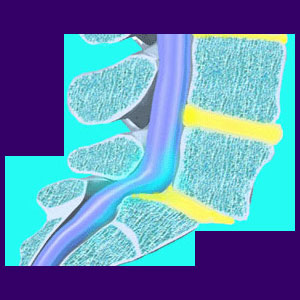
Congenital back pain conditions can be some of the hardest physical problems for a patient to overcome, since they exist from birth. Treatment options for many conditions are limited and often have mixed results. However, congenital spinal discomfort is statistically rare, compared to other possible sources of symptoms, and many genetically-transferred conditions do not cause any pain whatsoever. Keep this in mind if a musculoskeletal irregularity is discovered in your child. Do not jump to conclusions, but instead, allow medical investigation to tell the whole story and the evidence to convict or clear the condition of any symptomatic blame.
This dialog covers congenital pain syndromes that occur due to inborn spinal and muscular atypicalities.
Types of Congenital Back Pain
Scoliosis is sometimes a congenital condition. Babies born with a spinal curvature have a good chance of developing severe scoliosis. Severe side to side spinal curves can cause pain due to uneven skeletal load, muscular stress, neurological impairment and organ constriction. Treatment most often consists of very invasive spinal fusion surgery.
Spondylolisthesis is a genetically transferred condition in many patients. This condition is often blamed for sourcing back ache, but is rarely the culprit when the condition is grade 1 or 2. Cases of congenital spondylolisthesis should always be monitored by a medical doctor, especially grade 3 and 4 cases, which may cause problematic issues, such as spinal instability.
Non-specific skeletal abnormalities can create painful conditions in the spine in some cases, but may also be nothing more than scapegoats in others. These may include transitional vertebra, sacralized vertebra and other abnormal bone formations.
Congenital Back Pain Symptoms
Many congenital conditions produce an obvious physical defect or deformity. These scenarios are not always inherently painful, but can act as a trigger for psychological back pain to develop. The care approach used by a physician is often instrumental in the prevention or initiation of a symptomatic expression.
Patients with obvious, but harmless, congenital abnormalities should be informed that their condition might cause a physical change, but is not likely to cause them disability or pain. A young reassured patient has a better chance of living a pain-free life than a patient that has been made to fear their condition.
It is also important for these young patients to receive support and positive reinforcement from family and friends. If they are made to feel delicate, easily injured, or less than, these patients are doomed to develop actual symptoms based on their perceived deficiency. It is often better to allow the patient to discover their own limits and constantly push them to excel, rather than over cautioning them to beware.
Congenital Back Pain Relationships
Congenital abnormalities range greatly in their appearance and potential effects. Some are hidden from view and may not be discovered for a very long time. This is so common with cases of mild scoliosis, minor vertebral misalignment, sacralization, spina bifida occulta and transitional vertebra formation. Other more obvious irregularities may be apparent from the time the child is born and maybe even before.
Significant congenital spinal issues may create pain and disability from an early age, while others may not be problematic at all, or to any noticeable degree. Just remember that no matter what the condition entails, certain guidelines for treatment apply:
Serious health disorders should always receive attention from a specialist and multiple options should be explored for treatment before a particular path is selected. Borderline and theorized painful issues should be thoroughly investigated as to their symptom generating ability before treatment ensues. Minor congenital issues should always be studied carefully to ensure they will not progress. Furthermore, if they are deemed innocent, no doctor should ever impart the nocebo effect on the patient by making them worry unnecessarily. The emotional effects of these conditions can be worse than their actual physical ones.




